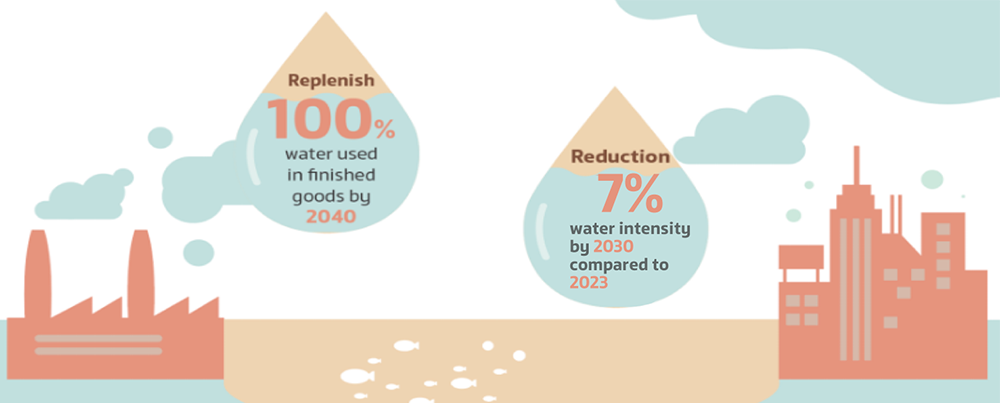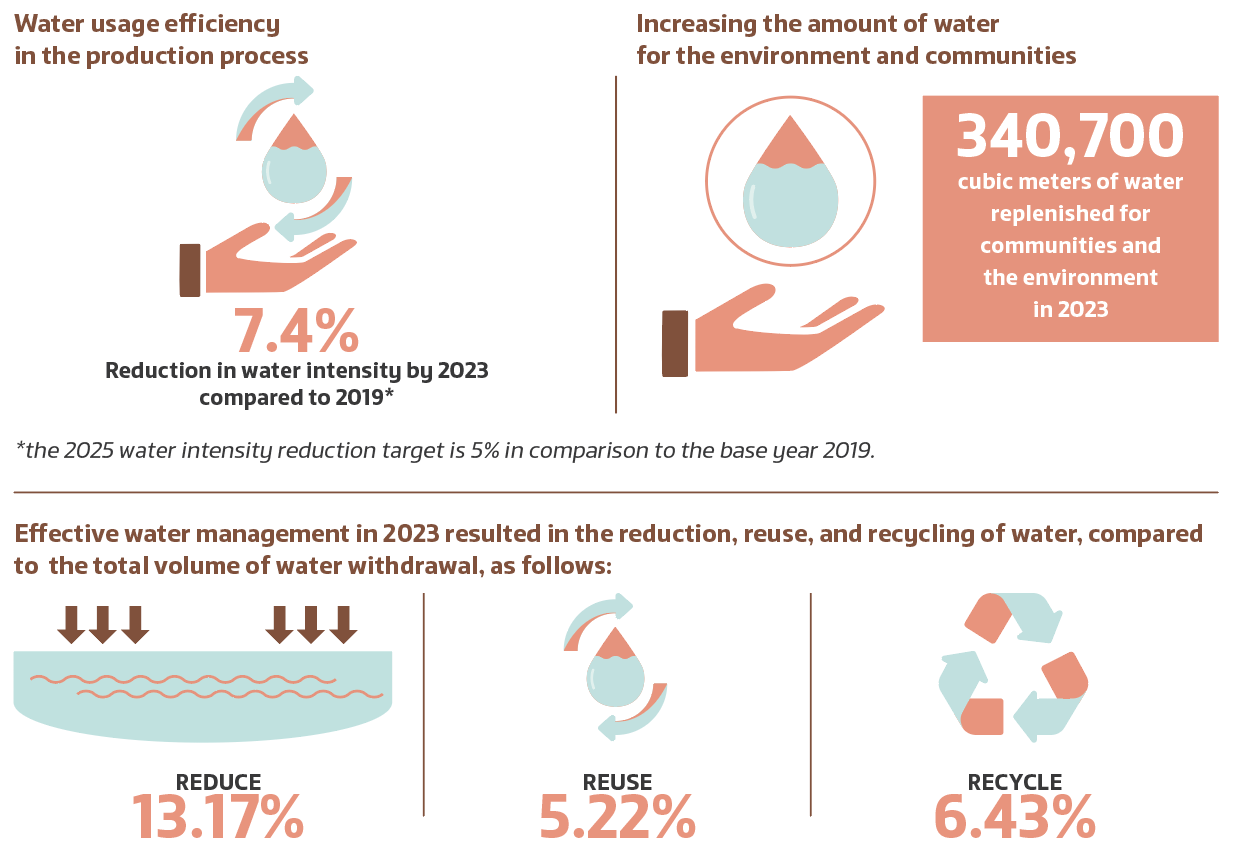ThaiBev aims to implement water stewardship practices for the long-term sustainable use of water for local communities, in order to mitigate impacts from our own operations, while also seeking collaboration from key stakeholders, including government, business and value-chain partners, non-
governmental organizations (NGOs) and communities.
Our aim is to drive water stewardship in terms of water availability, usage, consumption, quality, and replenishment, as well as promoting clean water, sanitation, and hygiene (WASH).
ThaiBev’s Corporate Water Management Policy was
endorsed by the Board of Directors, in order to strengthen
the company’s water management. The policy sets out clear intentions and guidelines to minimize water impact from the company’s production activities, by assessing water
quality and quantity, applying international water resource management tools and standards, using new technologies, and being responsible for water consumption.
ThaiBev has identified water management as one of the
key material issues that serves to enhance the company’s climate resilience. We manage water-related issues by identifying risks and opportunities, as well as monitoring
the risks. We review our physical risk assessment related to water in all our production facilities every three to five years, in order to understand potential risks and to prepare for
the impacts of climate change. This enables each facility to develop appropriate water-related risk management plans and mitigation measures.
ThaiBev focuses on ensuring that all production facilities are certified with the international standards for environmental management (ISO14001). In terms of controlling the standards of effluent discharge, the company treats wastewater to a higher quality standard (in terms of pH, temperature, COD, BOD, TSS, oil, and grease) than legal requirements before releasing it into the water source, thereby ensuring minimal impact on the ecosystem.


ThaiBev production facilities are certified with international standards for environmental management (ISO14001). Employees are required to participate in annual training to refresh their knowledge of the production process, focusing on reduce in water usage in the facilities. They are also encouraged to participate in water efficiency programs.

in Thailand completed a Water Sustainability Assessment (WSA) for surface
water and groundwater.

since 2012 due to our stringent efforts
to control our environmental impacts
and our close relationship with surrounding communities.

ThaiBev has received the Water Footprint of Product (WFP) Certification from the Water and Environment Institute for Sustainability (WEIS, a division of the Federation of Thai Industries) for its Crystal drinking water. This certification was achieved by accurately assessing the amount of water used in the production process throughout the value
chain and successfully passing the Water Scarcity Footprint assessment and certification. In 2023, 23 ThaiBev Group products from seven companies have WFP certification.
Unit: Megaliters
| Total volume of water withdrawn |
27,546 |
16,167 |
| Surface water |
16,624 |
11,075 |
| Freshwater ≤ 1000 mg/L Total Dissolved Solids |
16,624 |
11,075 |
| Other water > 1000 mg/ L Total Dissolved Solids |
0 |
0 |
| Ground water |
4,513 |
3,114 |
| Freshwater ≤ 1000 mg/L Total Dissolved Solids |
4,509 |
3,113 |
| Other water > 1000 mg/ L Total Dissolved Solids |
3 |
2 |
| Third-party water |
6,409 |
1,978 |
| Freshwater ≤ 1000 mg/L Total Dissolved Solids |
6,409 |
1,978 |
| Other water > 1000 mg/ L Total Dissolved Solids |
0 |
0 |
| Total volume of water discharge |
13,478 |
6,172 |
| Surface water |
8,779 |
5,136 |
| Ground water |
8 |
0 |
| Seawater |
29 |
0 |
| Third-party water |
4,662 |
1,036 |
| Total volume of freshwater discharge (≤ 1000 mg/L
Total Dissolved Solids) |
8,504 |
1,901 |
| Total volume of other water discharge (> 1000 mg/ L
Total Dissolved Solids) |
4,974 |
4,272 |
| Total water consumption |
14,691 |
9,995 |
| Change in water storage indicates increase in storage volume |
(623) |
0 |















